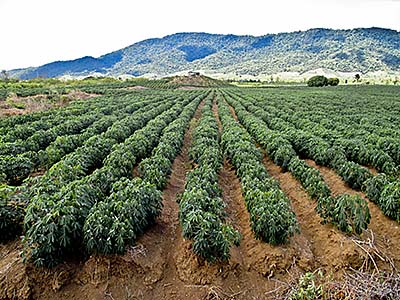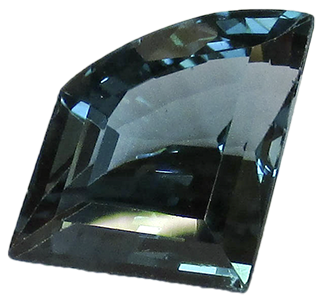
1.
Pailin
Pailin is a town and a province capital in west Cambodia. The province of Pailin exists since 2008; before it was part of Battambang Province. Pailin's surroundings are comprising of the northern parts of the Cardamom Mountains. The province is bordering Thailand in the west.
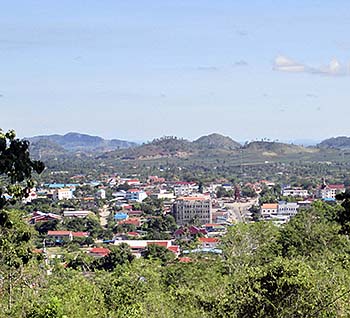
Pailin, seen from Phnom Yat. Image by Asienreisender, 9/2015
After the Vietnamese invasion in late 1979 (the Third Indochina War), Pailin was a retreat and major stronghold for Khmer Rouge guerilla fighters. In 1994 Cambodian government troops conquered the place, but lost it again to the Khmer Rouge short after. Khmer Rouge dominance went on until 1997, when the Khmer Rouge accepted an agreement with the government. As everywhere in Cambodia, the Khmer Rouge soldiers here enjoy complete impunity from all their crimes. Many old Khmer Rouge leaders are still living in Pailin. Allegedly 70% of the older men here were Khmer Rouge fighters. Many lead a privileged life. The last province governor (until 2014), Y Chhien, was a former bodyguard of Pol Pot and Ieng Sary (Brother no.3, foreign minister and deputy primeminister in Democratic Kampuchea).
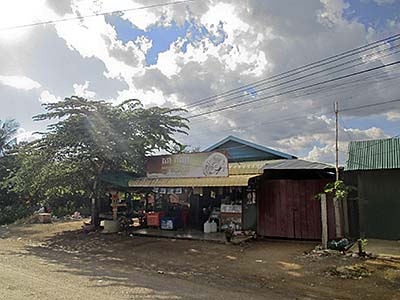
One of the quite typical wooden houses in a side road in Pailin. Image by Asienreisender, 9/2015
After the Vietnamese invasion and the end of Democratic Kampuchea, Pol Pot and the Khmer Rouge were over a decade decisively supported, equipped and armed by the USA, China and Thailand. This destructive policy was supported also by the United Nations.
The later peace agreement of 1997 between the government and the guerillas included the legal rights for the Khmer Rouge to exploit the local gem mines and the forests with it's rich tropical hardwoods.
In the war times the landscapes were heavily mined by the Khmer Rouge. Pailin is one of the most heavily mined areas in the world. There have been effords to clear the mines, but although a great deal of them have been removed, still there are not few left in the remaining forests. When leaving the paved roads it's therefore better to remain on paths where others have gone many times before.
The population of Pailin has changed since the late 1990. The area was widely depopulated and destroyed. Various people from other parts of Cambodia have been attracted to move in.
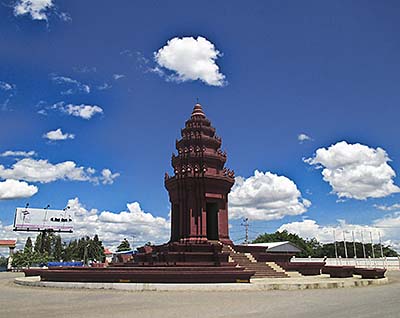
The Independence Memorial in Pailin is, as in many other Cambodian towns, a copy of the same memorial in Phnom Penh. They all are a replica of the main prasat (tower) of Angkor Wat. Inside this one is a pillar with a flower pot. The flowers are dead because they didn't get water. Image by Asienreisender, 9/2015
Since very recently the place starts to develop. In the July 2013 elections the government improved the totally devastated roads. The NH57 between Battambang, Pailin and Psar Pruhm at the Thai border has been paved, a number of roads inside and around the town as well. New bigger buildings like a new market hall outside are planned, and a new ringroad, a typical installation of the destructive capitalist traffic development, is planned. A morbid traffic rush is already pesting the few new roads and will increase rapidly. The 'oh so poor Cambodians' have enough money for motorbikes and big cars, preferably huge pickups.
Pailin is an area with a higher malaria risk. In 2009 a new strain of malaria was discovered in Pailin. It shows a higher resistance against treatments than other strains. Allegedly the Bill and Melissa Gates foundation is supporting the fight against malaria in Pailin. Since the tropical rainforests are widely cut here, the malaria rate dropped already due to that.
Climate
Pailin's climate also differs from that of Chanthaburi Province in Thailand. It seems that much of the southwest monsoon is queued at the mountain ridges in Thailand. While I personally witnessed a lot of rain around Chanthaburi in August / September 2015, here in Pailin it's comparably much dryer, sunnier and hotter in the same time. It seems very much that the mountain ridge of Khao Khitchakut and Khao Soi Dao Tai, who are still to see from Pailin and who are often surrounded by huge clouds, absorb much of the rain before the reliefed clouds are blown into Pailin. Here they appear then merely as fleecy clouds.

That's all what's left here from the heavy rainclouds in Chanthaburi Province. They poured most of their loads in Thailand. The southwest monsoon looses a lot of power at the mountain barriers of Khao Soi Dao Tai (1633m), which is part of Khao Khitchakut Mountain Massive. At a closer look you can see the majestic mountain at the very horizon, paramounting the landscapes, it's peak reaching into the clouds.
I noticed also that Pailin River has a low water level these days as several pools are on a low level as well. That's remarkable for the peak of rainy season. However, sometimes it's of course raining in Pailin. And then it pours for some hours. As a side effect comes, what has to come: electricity breaks down for hours. Landscape seen from Phnom Yat. Image by Asienreisender, 9/2015
Local Culture
The local culture of Pailin has distinctly different roots than the dominant Khmer culture. In the old times Pailin was inhabited by Burmese immigrants. A first wave of immigrants were the Kola People who came here in 1876 and the following years. The Kola came from the Mogkok region in Burma, where are also gem mines. That's probably the reason for their choice of Pailin as a new destination, for they brought experiences in gem mining, processing and trade with them. A second wave of immigrants were Shan People, wo came here in the years from 1920 on. The Shan origins root in the Burmese parts of the Golden Triangle. The Shan are actually a Thai tribe.
Pailin's cultural differences were in the past expressed in the local cuisine, dressing, festivals, arts and the Burmese-styled temples in town. Nowadays there seems to be little noticable difference anymore. Pailin's population has not only changed in the past dark ages, moreover it is now merely part of the globalized culture of commererce, commerce, commerce... Nevertheless, the other day I saw a face in town which looked very Burmese to me.
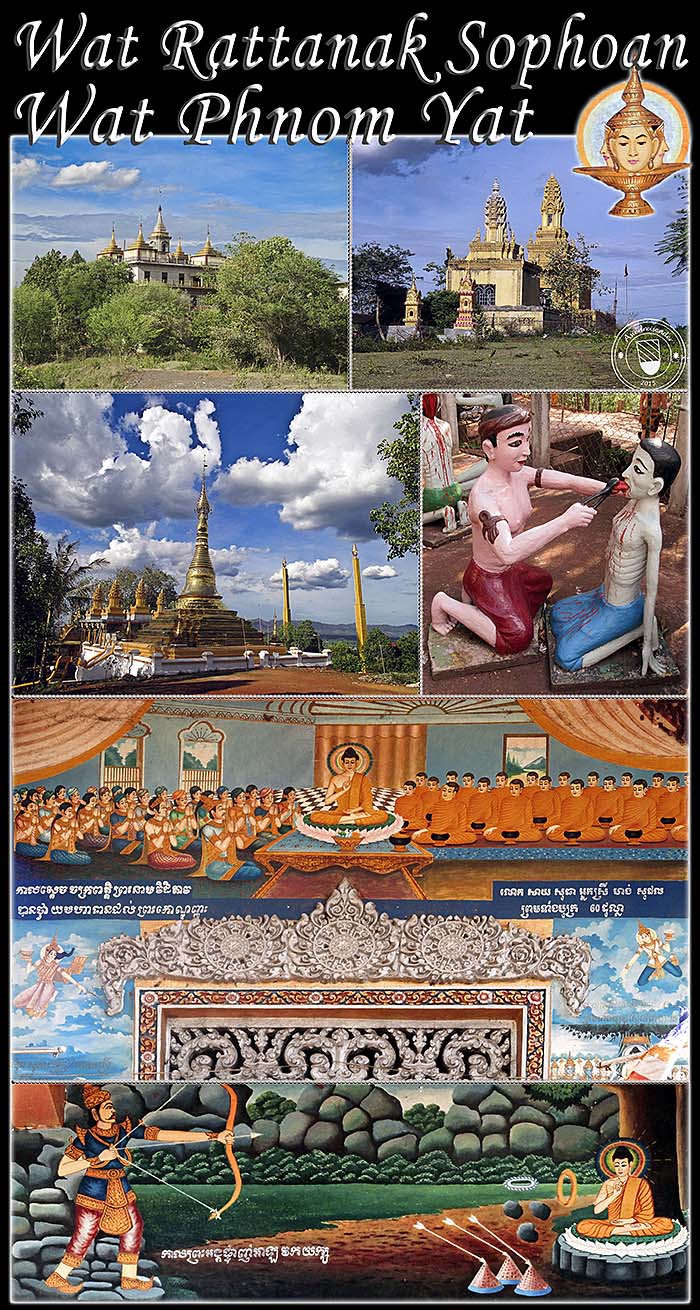
Wat Rattanak Sophoan is situated at the foot of Phnom Yat. It's a Burmese style buddhist temple. It's difficult to date it; if it is an original Kola temple it's probably dating back to the 19th century. On the nearby hill Phnom Yat is another temple placed, a Shan temple from the 1920s. The golden pagoda has the recommendation to be a local celebrity, a place of worship for many locals. At this Shan temple are also figurative depictions of the buddhist hell. The image shows how a liar gets his tongue pulled out. The temple paintings are also distinctive from those of other locations. Local variations or interpretations of buddhist tales are depicted here. Images and photocomposition by Asienreisender, 9/2015
2.
Economy
Pailin's economy is based on three pillars. It's the gem mines of the region, where, like in neighbouring Chanthaburi Province, rubies and sapphires are produced, it's the precious woods of the region and, since the last years, the casino and gambling business at the Thai border in Psar Pruhm. The casino business is also, at least partially, in the hands of former leading Khmer Rouge functionaries. Certainly Cambodian and Thai Chinese have joined in.
In the first half of the 1970s Pailin was a relatively wealthy place due to the riches of the gem mines. These riches were also a main reason for the Khmer Rouge to conquer this place, before they took over the whole country.
After many years of extensive exploitation, it seems that the most precious stones are gone already. What is produced nowadays in Pailin are rather gems of small size and lower quality.
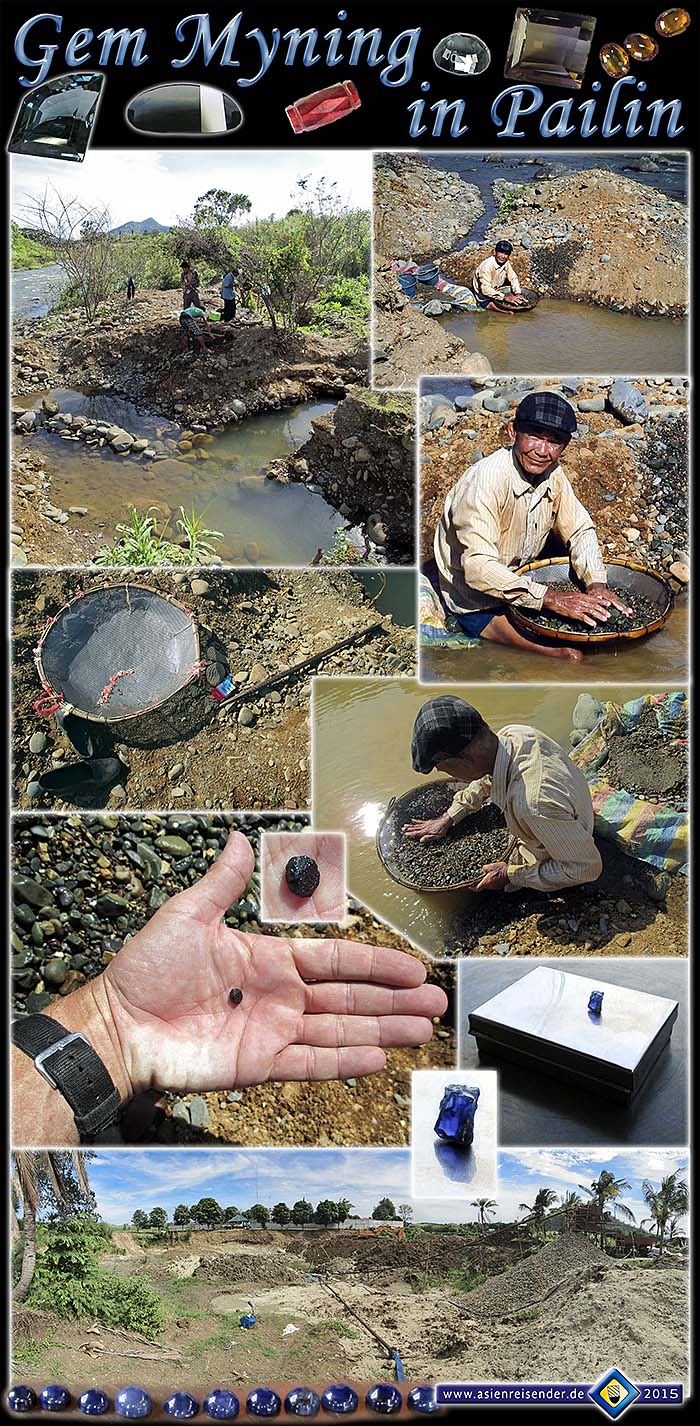
The great times of Pailin's mines are over. Though, what's remaining in the soil is still exploited, as well by bigger, local companies with developed equipment as by small diggers. At Pailin River are, as it seems, always some diggers active who dig holes at the riverbank and riddle the ground. They find small pieces, and it's certainly not spectacular. The gems are polished then and are presented in the shops. Most of the shops are at the foot of Phnom Yat. The image below shows an industrial mine with a conveyor belt and a pump. Images and photocomposition by Asienreisender, 9/2015
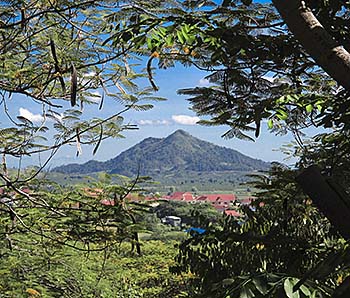
A mountain peak north of Pailin Town. Only the steepest parts are still forested. Image by Asienreisender, 2015
The land is also widely deforested. The Khmer Rouge sold the precious woods for gaining weapons and ammunition. The highest and steepest mountain ridges are still mostly covered with forest, but the precious trees have all been taken out. The wildlife suffered and increasingly suffers the impact of hunting. The plains are completely deforested. The agriculture in Pailin looks much poorer than the rich orchards westwards in Thailand.
I haven't seen a single rice paddy around here. Rice has to be bought from outside. Therefore are some cash-crops produced around Pailin, including soy, cassava, sesame, and mung beans.
A number of new guesthouses and hotels sprang recently up in town. It seems, that Pailin is preparing for tourism. I wonder, if the gems and two old temples here are reason enough for so many visitors to come. I heared, that the many Cambodian holidays attract Khmers from Battambang, Phnom Penh and other places in the country to come here and book out all the hotels.
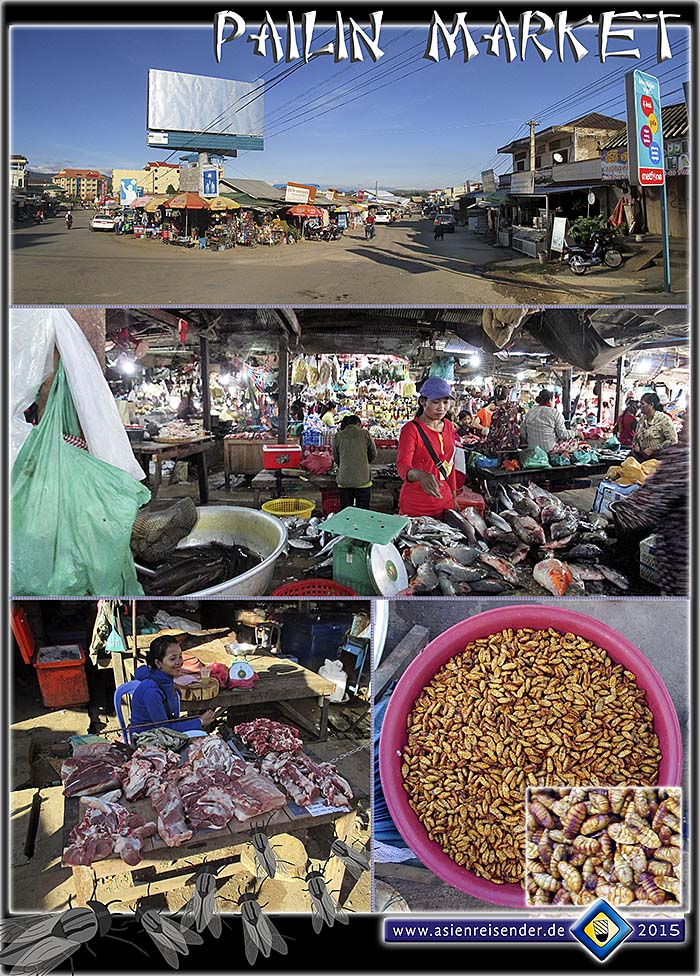
Pailin is, generally spoken, a relatively 'clean' place for Cambodian relations. There is not extensively much litter on the roads, bad smells are limited and a waste disposal system is implemented. Also the fresh market appears widely acceptable, although the meat and fish market are certainly not. Raw meat, lying in the sun for hours, covered with blowflies, is certainly no good indicator for food hygiene. Pailin's fresh market is, by the way, equipped with a new roof. There is another, bigger market in planning, which will be placed outside of town along the new ringroad.
Insects of many kinds for sale belong on any Southeast Asian market. They are a protein supplier.
Images and photocomposition by Asienreisender, 9/2015
3.
The Border at Psar Pruhm /
Ban Pakkad
The Thai/Cambodian border at Poipet, somewhat further north, has a bad recommendation for fraud, fraud, fraud (as well as from the Cambodian officers as also from masses of scoundrels who try to cheat inexperienced travellers). The buerocratic border procedures are also as annoying as time consuming. It's one of the main entry gates to Cambodia.
The border of Ban Pakkad/Psar Pruhm therefore is quiet with little traffic. It's open for international arrivals since 2004, but very few Westerners or other tourists are passing here. Most of the visitors are wealthy Thai/Chinese who come here for gambling. Casino gambling is forbidden in Thailand. The border procedure was easy, quick, there was no queue and no bribes asked for.
Psar Pruhm itself consists of a broad main road, the one which leads further to Pailin and Battambang. It's the national highway 57 (NH57). There seemed to be no bus transport to Pailin. Walking through the place, a number of motorbike drivers approached and tried to sell me an expensive trip to Pailin. A simple 'No, thank you' reply was not sufficient enough for them to accept. One of the guys appeared three times to ask me again, and I had to find some clear words at the end to get rid of him. At the edge of town I luckily got a lift to Pailin. I was actually prepared to walk the way. It's about 12km to 15km, maybe a bit more. The newly paved road leads through a picturesque and deforested landscape. It looks much poorer and abandoned than on the Thai side.
Pailin has been an outer part of Siam for various times from the 16th century until 1946, when it came to Cambodia.
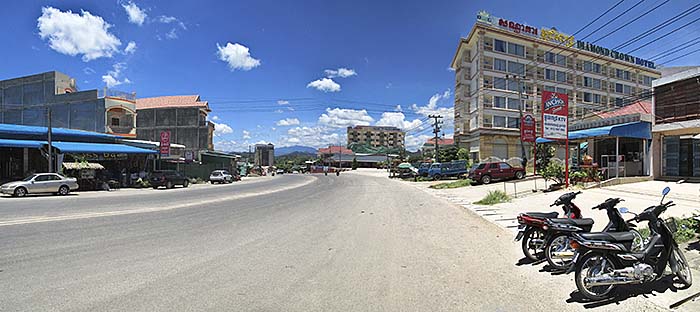
Psar Pruhm's boom is based on the gambling industries. The casinos promote the secondary industries like hotel business, food services and prostitution. Image by Asienreisender, 9/2015
